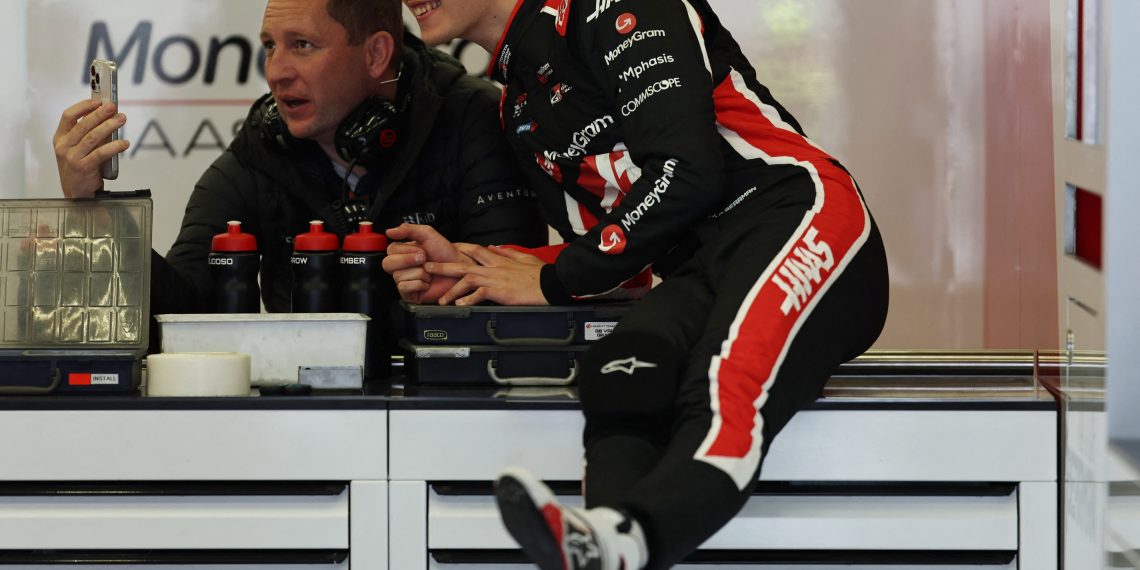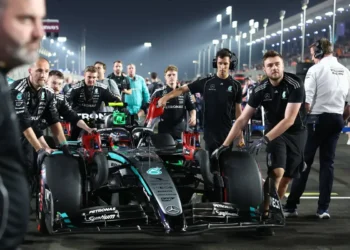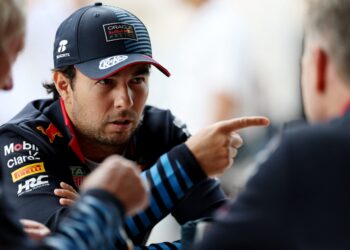#### Oliver Bearman Caught in F1 Broadcast Controversy: Misleading Radio Messages Spark Outrage
In a dramatic twist at the Chinese Grand Prix, Haas F1 driver Oliver Bearman found himself at the center of a broadcasting controversy, claiming Formula 1’s coverage misrepresented his radio communications. The young British driver was initially portrayed as taunting former Ferrari teammate Carlos Sainz with a bold “ciao” during a pivotal overtaking maneuver. However, Bearman has vehemently denied the context in which the message was presented.
The broadcast, which played the radio message during Bearman’s thrilling on-track battle with Sainz, left fans and broadcasters buzzing with speculation. Yet, the reality was quite different. Bearman clarified the situation post-race, explaining to Channel 4 that his enthusiastic “ciao” was actually directed at Liam Lawson and an Alpine driver, following a skillful double overtake. “They messed me around,” Bearman stated, expressing his frustration over the misleading broadcast timing. He emphasized that the message was not aimed at Sainz but rather reflected his excitement after a strategic overtaking maneuver.
Bearman’s race at the Shanghai International Circuit was nothing short of spectacular. Starting in 17th position, he clawed his way up to finish ninth, eventually securing a seventh-place finish after the disqualification of other competitors. This remarkable performance earned him his first points of the season, a feat made even more impressive by the challenging conditions of the race.
#### F1’s Radio Broadcast Practices Under Scrutiny
This incident is not isolated in the world of Formula 1 broadcasts. Ferrari’s team principal, Fred Vasseur, has also expressed dissatisfaction with the selective airing of radio communications, particularly those involving Lewis Hamilton and his race engineer Riccardo Adami. The incomplete broadcast of these exchanges has led to a skewed public perception of Ferrari’s race strategies.
Vasseur criticized the misleading narratives created by these selective broadcasts, calling them “a joke.” In response, Formula One Management (FOM) defended its practices, insisting there was no intent to mislead viewers. This defense comes amid growing scrutiny of how radio communications are presented to the global audience, especially following a similar incident during the season opener in Australia.
Lewis Hamilton, who joined Ferrari this season, found himself in the spotlight after his radio interactions with Adami were dissected by fans and media, prompting him to clarify that his tone was “very polite” despite the intense scrutiny.
As the 2025 F1 season progresses, these incidents highlight the significant impact of broadcast decisions on the sport’s narrative. With drivers and teams calling for more transparency and accuracy, the pressure is on FOM to ensure the integrity of the sport is upheld in its media presentations. As Bearman and others continue to navigate the complexities of F1’s media landscape, the call for more responsible broadcasting grows louder, demanding a balance between entertainment and factual representation.










